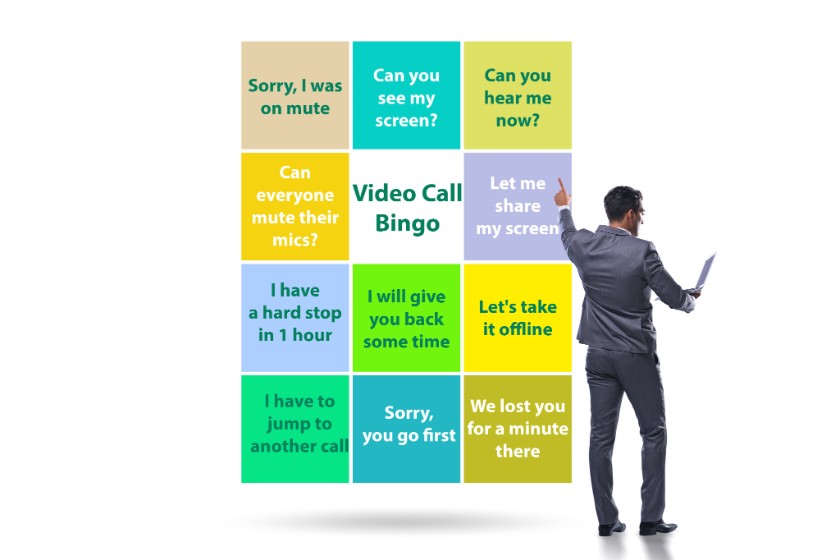Virtual onboarding is introducing new remote hires to your company, their role, and their colleagues. Onboarding remote employees presents unique challenges for small businesses, but it doesn’t have to be a struggle. There are simple strategies you can take to ensure your virtual onboarding puts your new employees first, making them feel connected and part of the team.
In addition to the traditional information sharing via meetings and training that takes place during onboarding, there are some more creative ways to make the process smoother, more effective, and more fun. Here are our 15 best virtual onboarding ideas for your small business.
1. Send a New Hire Gift
After your new hire accepts the offer, don’t go silent. Set the right tone by sending your new employee a welcome gift to their residence. Have this gift arrive a day or two before their first day. Creating a customized package makes them feel welcome and excited to start.
Some ideas of what to put in the welcome package:
- Snacks
- Hand sanitizer
- Company coffee mug
- Assortment of teas
- Noise-canceling headphones
- Coffee
- Company water bottle
- Company polo and sweatshirt
- Personalized note welcoming them to the company

A simple new-hire care package can be as simple as sending coffee.
2. Create an Online Resource Database
This tip applies to your company’s ongoing operational processes and will help every employee, especially new remote employees. When an employee has a question, they may not know who to turn to for the answer. When they have an online database, they can search for the answer without bothering anyone else.
An online database should also include a directory, especially for larger companies. Existing employees only need to learn the new hire’s name, but that new employee has to learn potentially hundreds of names, or at least dozens that they’ll work closely with in their role. Providing a new hire with access to your company’s online directory so they can put faces to names will help them be better prepared for their first day. If you put your directory in an organizational chart structure, that’s even better as it gives your new employee a visual on where they fit into the organization, along with everyone else.
Your online database will also give your new hires easy access to important employee forms. They can also view guides and best practices on how to use your different software programs, like time tracking and payroll.
3. Start Later & End Earlier on the First Day
Starting a new job is exciting but also intimidating. Have new remote employees log in a bit later in the day than you do. This allows you to get settled and check in on important items before giving all of your attention to the new hire.
The benefit of starting a remote employee’s first day at 11 a.m., for example, is that they can spend some time getting to know their supervisor and then go straight to lunch with their teammates. When they return from lunch, you can go over important items with them and make a full introduction to the team before letting them go early. First days are intimidating, so making it short gives the new employee time to process and ease into their work.
4. Assign a Workplace Buddy
When you make a new hire, you should give them immediate friends. One way to do that is to hire multiple people at once—more on that below. The other way to do this, whether you’re hiring multiple people at once or just one new employee, is to assign them a buddy.
Starting a new job is nerve-wracking for many people. When you’re working remotely, that only exacerbates the potential feelings of loneliness and exhaustion. Assigning your new hire a buddy who’s been at your company for at least a year will give them someone to lean on when they have questions and turn to for help.
Adding to this, you should also schedule regular chats with your new employee and their buddy. Start with a few brief chats during their first couple of weeks, then reduce it to once per week for the next couple of months. This gives your new employee dedicated time to ask their buddy questions and learn more about your company and processes.
5. Have a Virtual Welcome Party & Give a Virtual Tour
One of the best ways to welcome new employees is to host a virtual welcome party. If you have a small company, invite the entire team to attend. Depending on the size of your organization, you might only invite the team members with whom your new employee will work closely, keeping the attendance limited to about a dozen. A smaller group makes it easier for participants to talk during the virtual call.
Make sure you schedule this call as soon as your new hire has accepted the job. This gives your existing team the ability to block time on their schedule during the new hire’s first week. Send out a short bio on the new employee, so your existing employees know a little about their new teammate.
If you have a physical office, give a virtual office tour before or during your welcome party. Showing them the office is a great way to help the new worker get a visual map of the office and how people interact. While it’s not the same as being there, taking this approach makes it easy for your new employee to create a mental map of your office, even if they’re going to be a fully remote worker.
6. Conduct an Entry Interview
An entry interview asks new hires about their interests, values, preferences, and aspirations. These also give you the chance to ask questions you didn’t ask during the interview process. The new employee knows you’ve already selected them for the job, so they’re likely to provide you with more in-depth and detailed responses.
Many companies hold interviews to hire employees and when offboarding employees, but then never have similar conversations again. Conducting an entry interview with a new hire can give your small business crucial information. An entry interview can also make the new employee feel like they’re contributing to your company on their first day. These conversations build strong relationships between employees and their supervisors.
7. Schedule Team & One-on-One Events
Once or twice during the employee’s first week, schedule two or three employees to join the new hire for a virtual lunch. Provide each employee with a stipend to order delivery so they can get to know each other over a meal. Providing lunch for a new employee is a small gesture, but it goes a long way in creating loyalty to the organization and giving the employee a chance to get to know their co-workers better.
Also, schedule one-on-one chats, maybe over coffee, as employees start their day. This is a great opportunity to break up the new employee’s first few days with less structured and more personal conversations. New employees can get overwhelmed in the first days at a new job, especially when they’re bouncing from virtual meeting to meeting.
By scheduling coffee chats with their team members, you build in natural breaks for the employee. It doesn’t have to be long—20 minutes is plenty of time to build rapport between colleagues. Over the first couple of weeks, schedule two or three of these per day with the team members your new employee will work with most closely. Every few days, they’ll reconnect with the same person, giving each of them the chance to continue building their relationship.

Having a coffee break with new hires can help them ease into their role and build closer relation team members.
8. Host a Q&A Session
You can incorporate this into your new hire events or create a separate Q&A session. If you host a separate Q&A session, we recommend doing so after your new hire has been at work for a few weeks. Make sure they have a good footing so they can ask more detailed questions about the company and their role.
Who should make up the panel to answer questions? Anyone you see fit. In smaller companies, this may include the owner and other members of leadership. In larger companies, maybe it includes department heads or other people who the new hire won’t regularly interact with, giving them a chance to ask direct questions from some of the people making decisions for the company.
If you’ve hired multiple people at once, you can group these sessions to save time for everyone. Make sure you also use an online platform that allows for hand-raising so that people aren’t talking over each other in large groups.
9. Align Multiple New Hire Start Dates
If your company plans to hire two or more people around the same time, even for different roles, try to align their start dates. Doing so makes it easier for your internal team to process multiple new hires at once.
Having several new employees start on the same day also gives those new employees a shared experience. Starting a new job can feel lonely, particularly for remote employees, but if a new hire is onboarding with a cohort, they experience the process together, feeling less alone, while having a built-in support network.
10. Play a Game
Later in the onboarding process, maybe during the second or third week, get the new hire’s department together to play a game. Playing games with colleagues really takes you out of a work mindset, giving everyone a chance to get to know people on a more personal level.
Find a game that fits with your company culture. For some companies, that could be doing a virtual escape room where colleagues have to work together to solve puzzles. Another idea is to do a scavenger hunt where people have to find items around their house. Take the time to choose a game that fits your culture and your team. The last thing you want is to force fun on people.
Consider fun questions such as “cake or pie?”—you ask people to vote for their favorite and then provide a reason why. You’d be surprised how many people can be passionate about their choice. You can do this with anything: coffee or tea; morning or night; salsa or guacamole; city or country.
Remote work bingo is another great idea that’s fun, engaging, and can poke fun at some of the challenges of working remotely, as in the image below.

Remote work bingo ideas
11. Include Remote Workers in Team Meetings
Employees want to feel like they’re contributing to the organization, even on their first day. Include your new hire in regular team meetings, even though they may not have a full understanding or grasp of what’s going on. This gives them the chance to see how colleagues interact in meetings and what topics they may need to be prepared to discuss.
You can even invite the new hire to engage if they feel comfortable. Ask them their input on an issue, especially if it’s one that doesn’t require any background knowledge. Getting them to engage in meetings on their first day or first week will give them the confidence to regularly join in with ideas.
And if you’re holding the meeting in a physical office, you can set up a video camera in the room so your remote employees can really feel involved. Do your best to ensure they can see everyone in the room, or at least the majority. Ensure the mic and volume are up and working properly as well. If you give physically present employees an opportunity to speak, don’t forget to give your remote employees the option as well.
12. Encourage Mindful Mondays
Encouraging your employees to practice mindfulness in a structured and meaningful way can have positive effects on both their personal and professional lives. Being mindful allows a person to be present in the moment and not worry about the things we cannot control.
Giving your team structured time each week to practice mindfulness encourages them to actively engage in their mental health. In doing so, it creates an open space at work, one where workers are more willing to ask for help if they need it.
13. Conduct Regular Check-ins
From the first day and on through the first few months, supervisors need to check in regularly with new remote employees. The goal here is not to come across as micromanaging, but rather to be present just enough to answer questions and make sure the new employee is on the right track.
Because onboarding a virtual employee is different from onboarding in person, you’ll need to have more frequent check-ins. These don’t all have to be video calls, although you should schedule at least one per week to establish good rapport and communication. The employee can ask questions and seek guidance during these check-ins, and the supervisor can see the employee’s progress over the first few months.

Supervisor and new hire have casual one-on-one check-in.
14. Let the New Hire Set the Pace
You need to be certain to cover certain topics early on, like company policies and practices. However, letting your new employee set the pace of the onboarding is a great way to welcome them to the company and let them feel comfortable with the process.
Although you need to make sure that pertinent information is covered on a schedule, you can relieve some pressure and anxiety by allowing an employee to complete onboarding and training at their own pace. Relieving pressure may help new hires better absorb all the information you’re throwing at them, ultimately making them better prepared to help your company grow.
15. Take a Team Photo
A quick way to show off each person’s individuality while also fostering camaraderie during a new hire’s onboarding is by taking a team photo. This can be either funny or professional. You can ask people to wave and smile or to make a funny face. You can have them hold up their favorite coffee mug or a stuffed animal. Whatever you choose, align it with your company culture. If the image is good enough, you could even add it to your website, showing how you get along even in a virtual world.

Remote colleagues taking a group picture
Bottom Line
Virtual onboarding is crucial to setting the tone for your new remote employees. You don’t want them to feel isolated or like they aren’t part of the team, especially if some of your workers go to a physical office. With the right tools and approach, you can give your remote employees an engaging and productive virtual onboarding experience, increasing the likelihood of their engagement and success at your company.